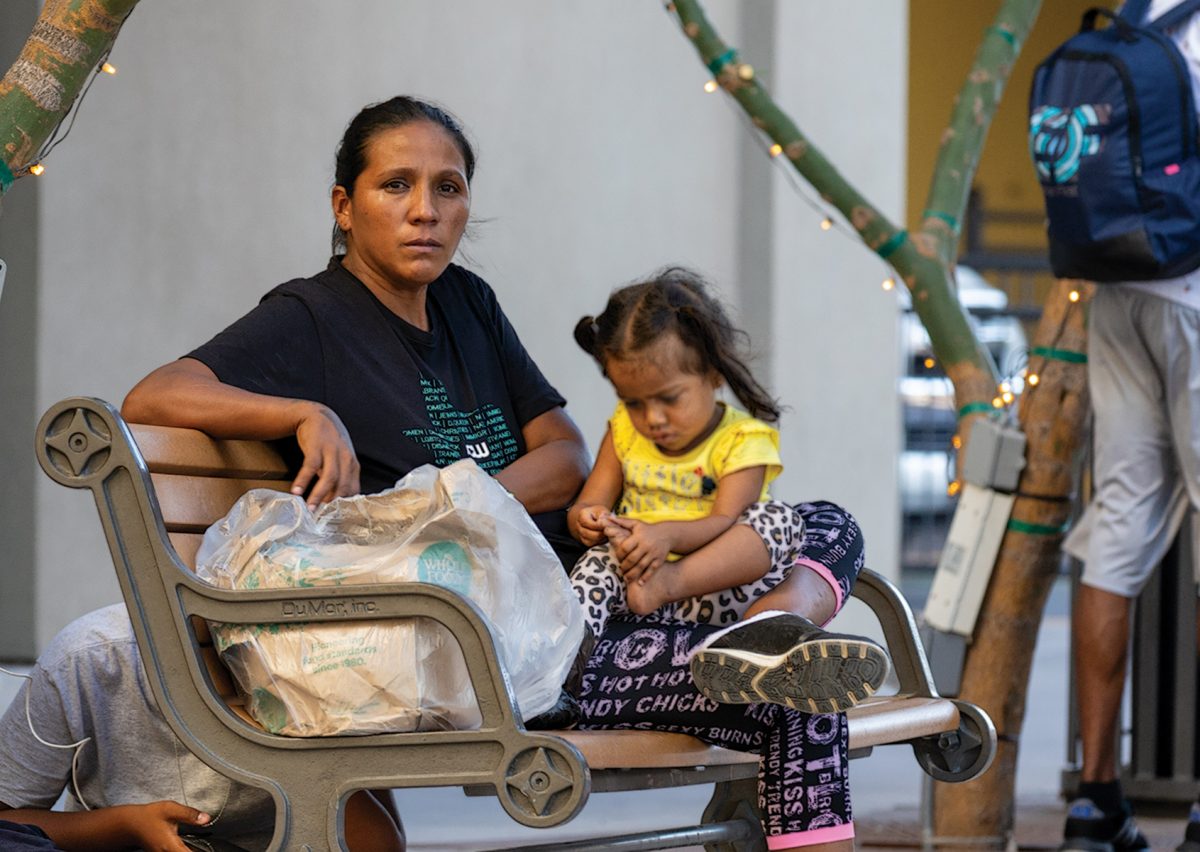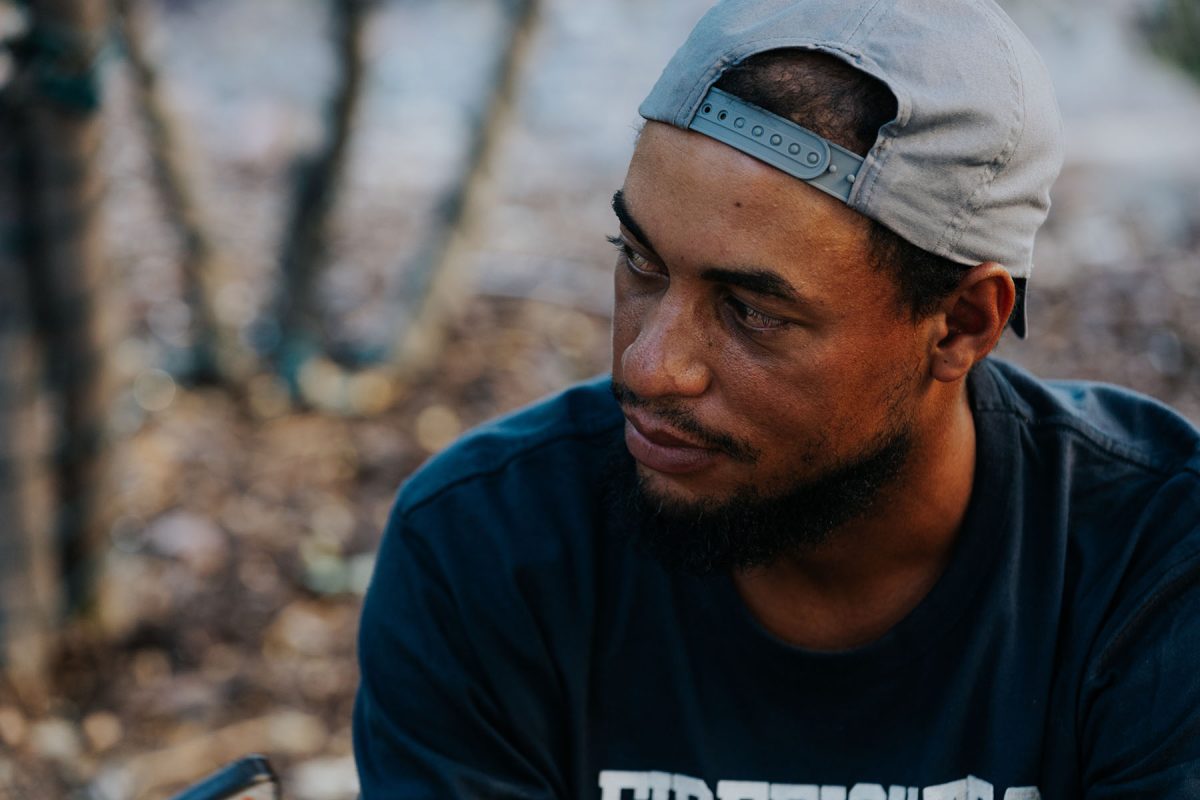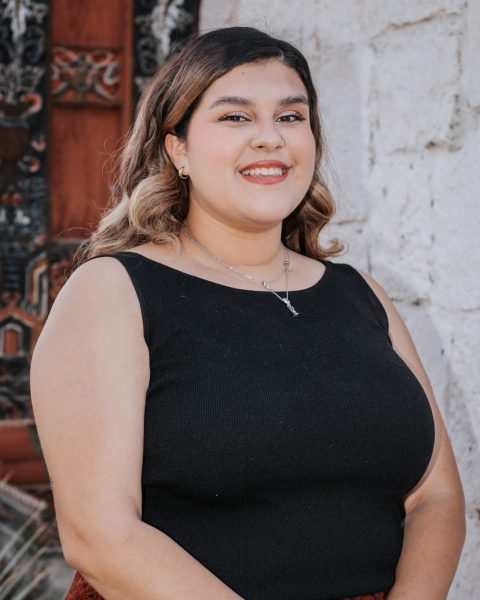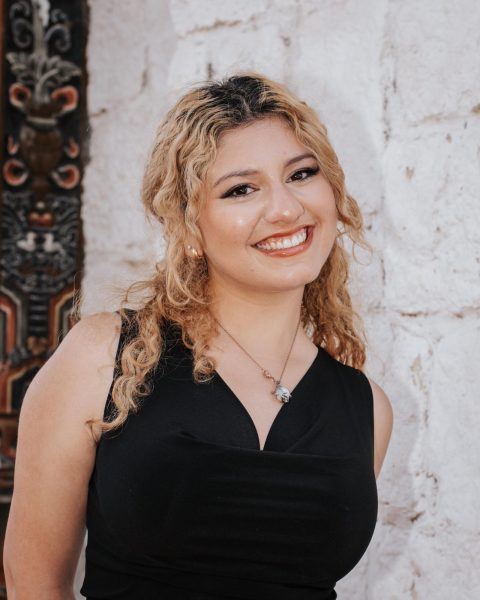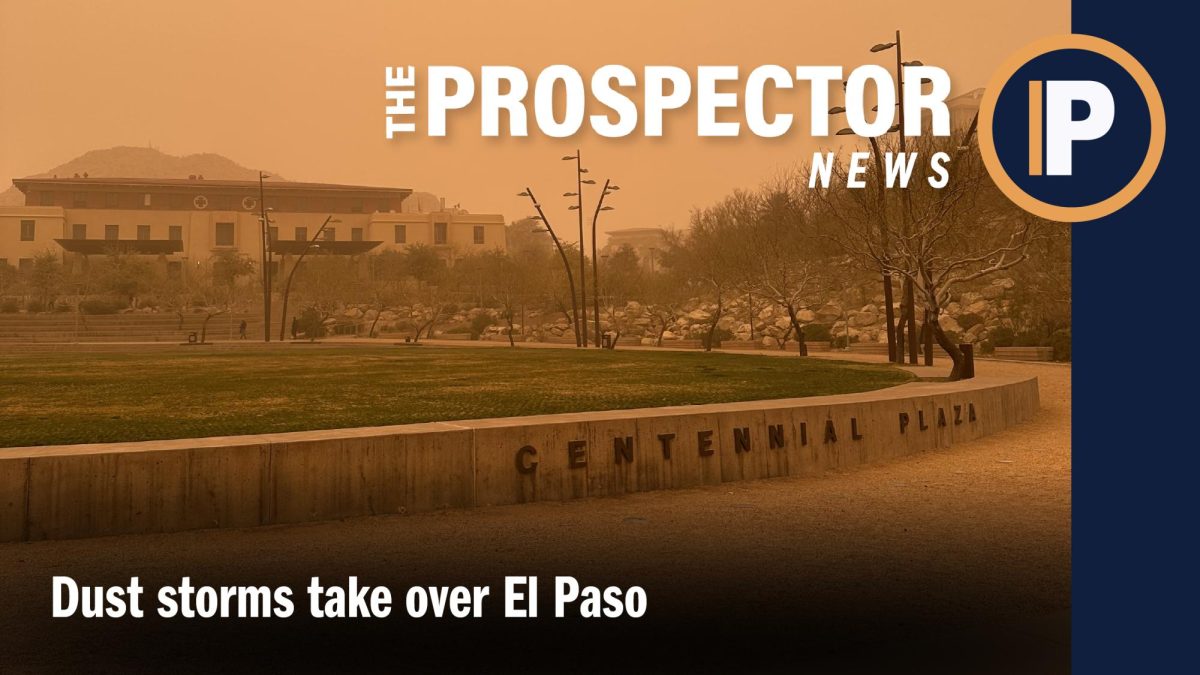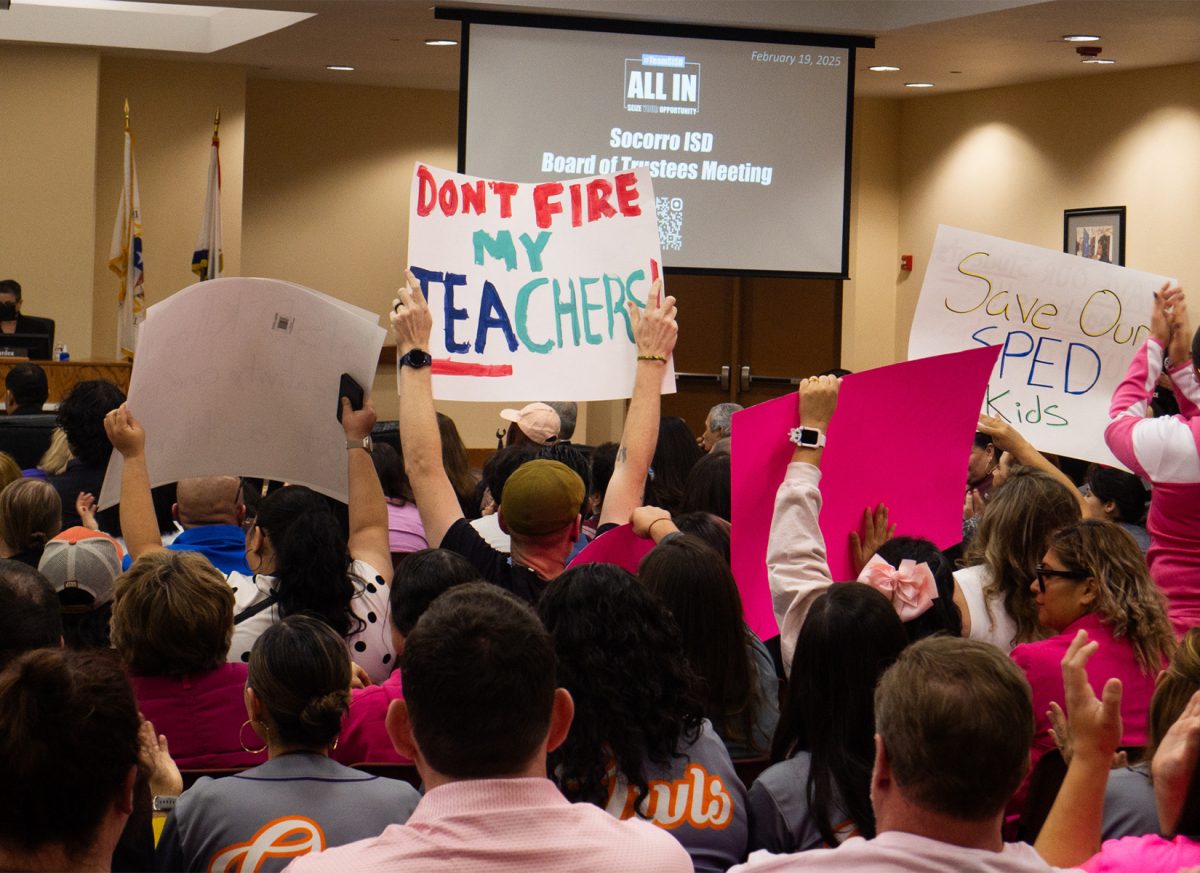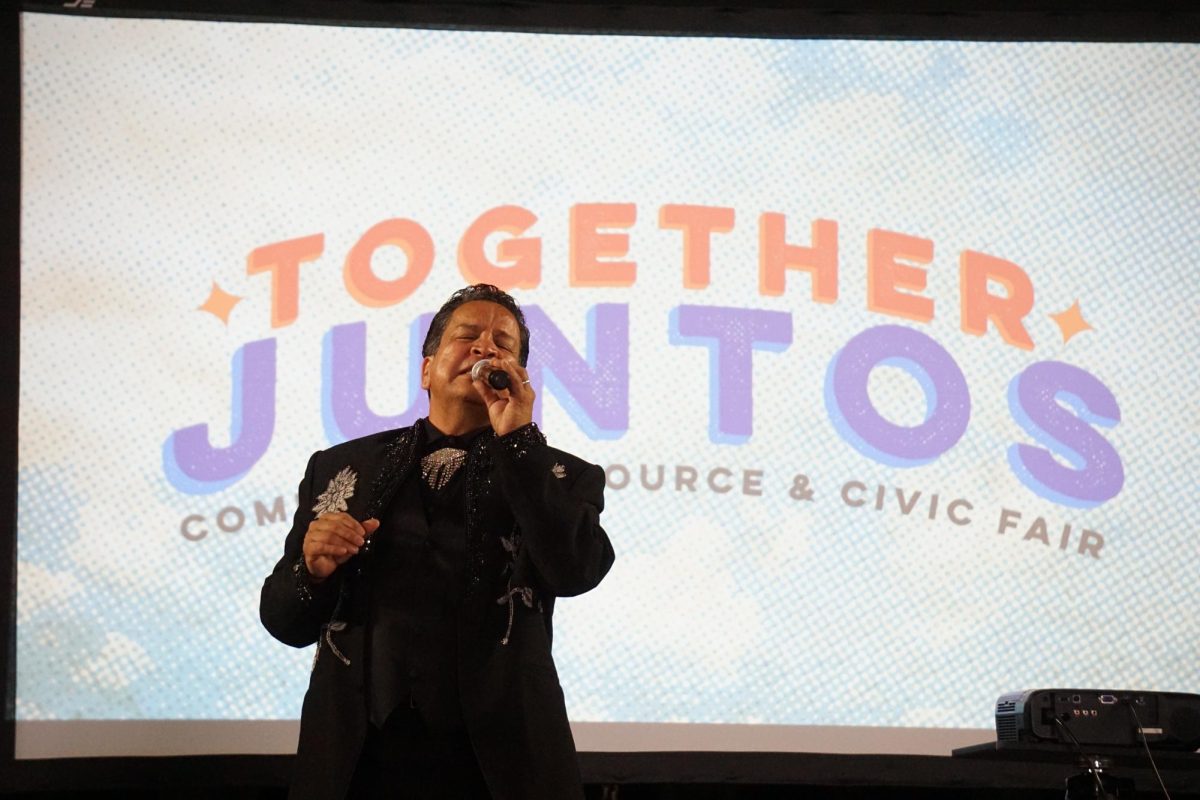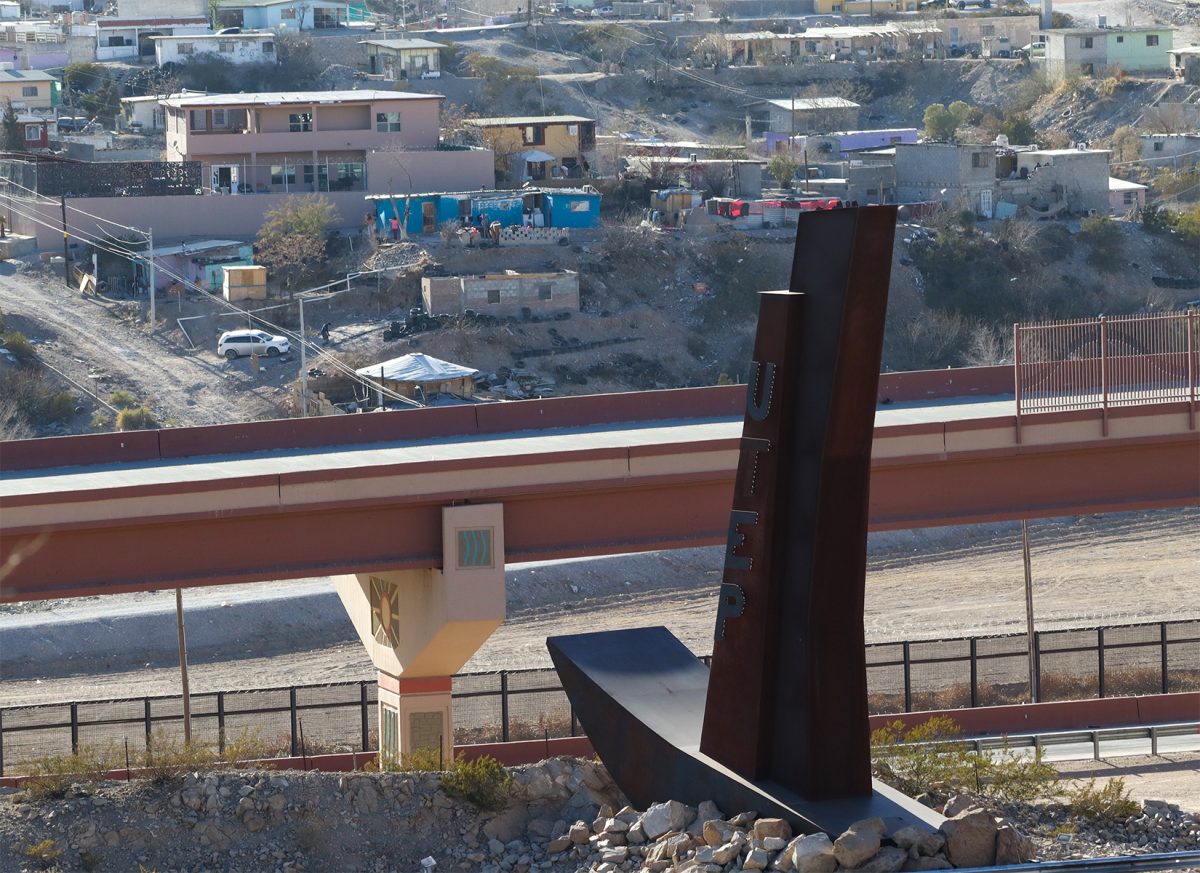Downtown El Paso and San Jacinto Plaza is most notable for its warm and welcoming environment, has turned into a disheartening place as visitors greet the eyes of hopeless migrants waiting for the foreseeable future. Today and for an unknown amount of days ahead, people visiting see migrant families, shoeless children, teenagers in search of food and cigarettes, or pregnant mothers holding their bellies while wearing torn shirts.
El Paso has become the topic of the migrant crisis once again as migrants have pour into downtown El Paso. From groups of people sleeping on the ground on San Jacinto Plaza, to others creating new lives on benches near the port of entry, walking around trying to find work. Coming from countries like Venezuela, Colombia and Guatemala, many share variations of the same story, fleeing their home countries due to gang violence, drug cartels, persecution and detrimental problems.
Almost every migrant interviewed by The Prospector says these journeys are never easy as many travel weeks on end and months just to arrive at any port of entry, whether that be here in El Paso or in Eagle Pass, with no idea of what the future holds. For 32-year-old-migrant Ender, who comes from Venezuela, the means of transportation to get here was riding the infamous ‘La Bestia’ or ‘The Beast’ in English.
‘La Bestia,’ the freight train starting in Chiapas; a southern Mexican state that borders Guatemala, is where many choose to decide their fate. Most migrants making a run for it in the darkness of the night and illegally jumping onto the train like Ender, they risk their lives and the lives of their families all for a better life. A well-known characteristic of ‘La Bestia’ is the lack of passenger cars, meaning migrants are forced to sit atop cargo putting them at risk of falling over, many times, to their deaths.
“Me monté en el en el tren y había un accidente y tuvimos que bajarnos del tren,” Ender said. “Vi varios delincuentes que buscaron de montarse en el tren. No vi personas que se cayeron, pero sí es es duro.”
Many like Ender arrive in Ciudad Juárez after hitching a ride on ‘La Bestia’ which is not an easy feat but is a necessary one to leave the troubles of their homes. Ender speaks on the dangers of riding ‘La Bestia’ and how although he encountered no deaths, he knows why many struggle to survive.
“En Venezuela perdí mi hogar a manos de la delincuencia y no tenía apoyo en la familia de mi esposa ni de mi familia. Y decidí buscar como quien dice, un mejor futuro para mis hijos,” Ender said.
Arriving in the borderland with six kids and a wife, Ender says he is looking for work to provide for his family.
“No quisiera depender de cosas así, sino o sea, con un permiso que yo pueda estar trabajar un bien sin tener problemas de nada. Sería una buena ayuda,” Ender said.
Ender hopes the U.S. can help him get a work visa or find work as many other migrants come with the hopes of finding work and a better life. Whether it’s alone or with family many try to find work quickly to send funds back to their home countries.
“Vengo sola, estoy sola y bueno aquí buscando un mejor futuro. Todavía estoy en espera porque como me ves, todavía estoy por aquí en la calle,” 25-year-old migrant Maria said.
Arriving in El Paso alone, Maria; a migrant from Colombia finds herself at a crossroads trying to find her way to Orlando, Fla. where she says a friend is waiting for her with a job. A job which she hopes will help provide so she can send money back to her family.
“Estoy esperando para ver si puedo trabajar por aquí para poder conseguir mis pasajes para llegar a mi destino,” Maria said. “Una amiga está en Orlando y ella me va a ayudar y a mi. Sé que cuando llegue allá ella me ha ayudado a buscar trabajo y todo eso y de ahí pa alante y empezar a mandar plata para Colombia.”
Many migrants say they don’t know where to start with finding a way to their preferred destinations. They shared that while not knowing how they will get to their destinations, not knowing what their next meal will come from is a bigger adversity, they face every day.
With the surge of migrants becoming an issue for the Sun City again, El Paso Mayor Oscar Leeser said in a press conference that he knows El Paso won’t be able to handle more for much longer.
“The city of El Paso only has so many resources and we have came to … a breaking point right now,” Leeser said.
In the same press conference, Mayor Leeser states that more than 2,000 migrants have entered El Paso. With high levels of strain on Customs and Border Patrol (CBP), the city of El Paso is doing its best in housing these migrants in shelters and motels.
Officials say having such large numbers of migrants roaming the streets and crowding shelters has caused concern about the spread of communicable diseases. Most recently, Sept. 25, Texas officials announced three reported cases of tuberculosis among migrants.
It becomes reason for concern as the Centers for Disease Control (CDC) is worried another surge of COVID-19 could happen this fall. Sitting on the grass of San Jacinto Plaza, many hopeful migrants with their lives in bags carry COVID-19 tests, testing themselves and others. It may show a moment of security, but with no immediate medical attention dedicated to these migrants, it’s unknown what can happen with the spread of infection.
There is no word on what the Biden-Harris administration will do to help border cities like El Paso, however, President Biden did make remarks during the 46th Annual Congressional Hispanic Caucus Institute’s Gala in Washington, D.C.
“We need our colleagues to act – for decades, immigration reform has been bipartisan in this country,” President Biden said. “Unfortunately, MAGA Republicans in Congress spent four years gutting the immigration system under my predecessor.”
For now, the city of El Paso is offering its resources to those who need them most.
Itzel Giron is the editor-in-chief and may be reached at [email protected]; @by.itzel.giron on Instagram; @itzel_anahi_16 on Twitter


